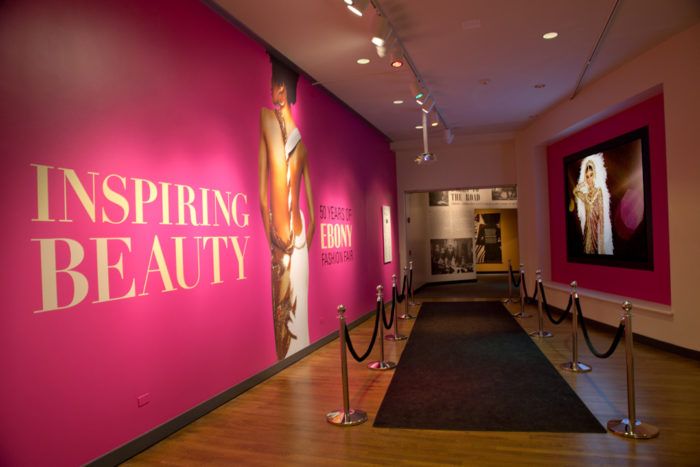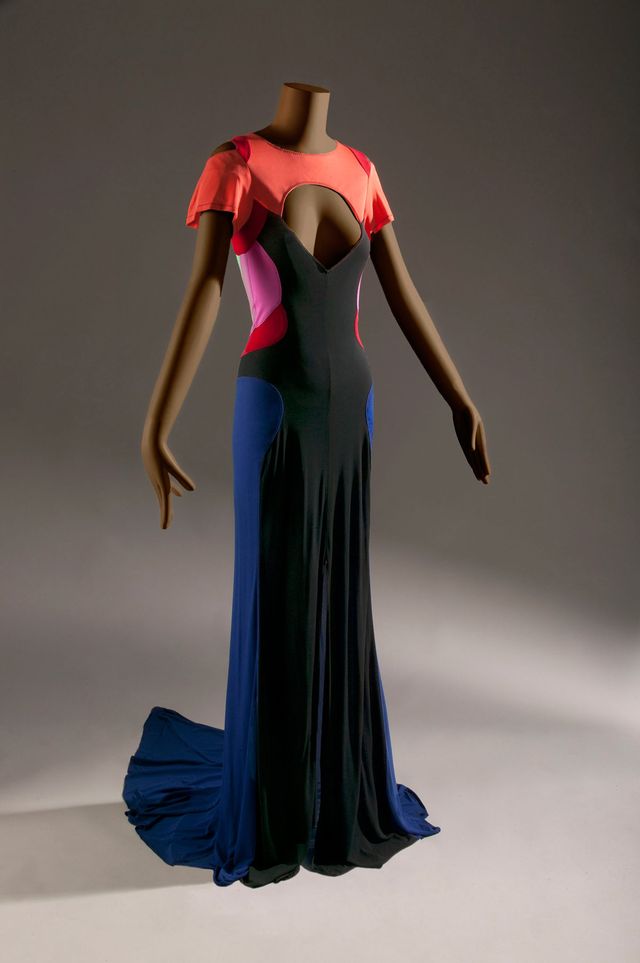
The Ebony Fashion Fair began in 1958 and became known as the world's largest traveling fashion show.
In “The Ebony Fashion Fair,” Threads #168 (August/September 2013), author Claire Shaeffer provided an exclusive, behind-the-scenes look at some of the fabulous designs featured in the Ebony Fashion Fair (EFF) and now on display at the Chicago History Museum. The museum pays homage to what became known as the world’s largest traveling fashion show in its EFF exhibition through January 5, 2014. Here are three more of the extraordinary haute couture garments from the Ebony Fashion Fair that you can expect to see at the museum exhibition.
Pierre Cardin (France)
Ball gown, haute couture, fall/winter 1988–89
The skirt on this sequined dress has five tiers. Each has a metal hoop encased in the hem so it stands away from the body. This gown catches the light and the motion of the dance on a ballroom floor.

Yves Saint Laurent (France)
Evening dress, haute couture, fall/winter 1979-80
Fabricated in red moiré taffeta, the Saint Laurent Picasso dress is trimmed at the neckline and hemlines of the sleeves and skirt with a narrow, braided piping. The piping was hand-sewn to the finished edge of the garment; then the lining was hand-sewn to the piping. Multicolored strips of satin were appliquéd to the skirt with silk thread and satin stitching. To support the skirt at the hem, the silk taffeta underskirt was stiffened with horsehair braid and a double ruffle was hand-sewn to the underskirt about 5 inches above the hemline.


Stephen Burrows (America)
Evening dress, Spring/Summer 2007
The first African American designer to achieve international recognition, Stephen Burrows made his first dress when he was 8 years old and launched his line in 1963. This multicolored dress is fabricated in Burrows’s favorite fabric–matte jersey. The individual color-blocked sections are seamed, and then topstitched with a zigzag stitch so they will lie flat.
photos: courtesy of the Chicago History Museum
Did you ever see the Ebony Fashion Fair? If you plan on attending the museum exhibition, what are you most excited to see?












































Pretty fabric and interesting concept, but she would be dancing alone, because no one could lead her anywhere with 5 metal hoops banging against them in awkward places....
7,000 square feet of couture...an exhibition two years in the making and a joint project of the Costume Council of the Chicago History Museum and Linda Johnson Rice of Ebony Publishing. It is an inspiring story of fashion meeting philanthropy. this show is truly amazing. If in Chicago don't miss it. If not, plan a trip. The Museum also has it's Costume Collection (the seoond largest to the Met) online in a digital collection is worth a long peek. Enjoy !
http://digitalcollection.chicagohistory.org/
“In a machine age, dressmaking is one of the last refuges of the human, the personal, the inimitable. In an epoch as somber as ours, luxury must be defended inch by inch”
-Christian Dior
My mom and I went to the Ebony Fashion Fair every year until they stopped having them. I even flew in from college one year just to go with her. The event of the year here in Phoenix.
What a nice collection!!!!!